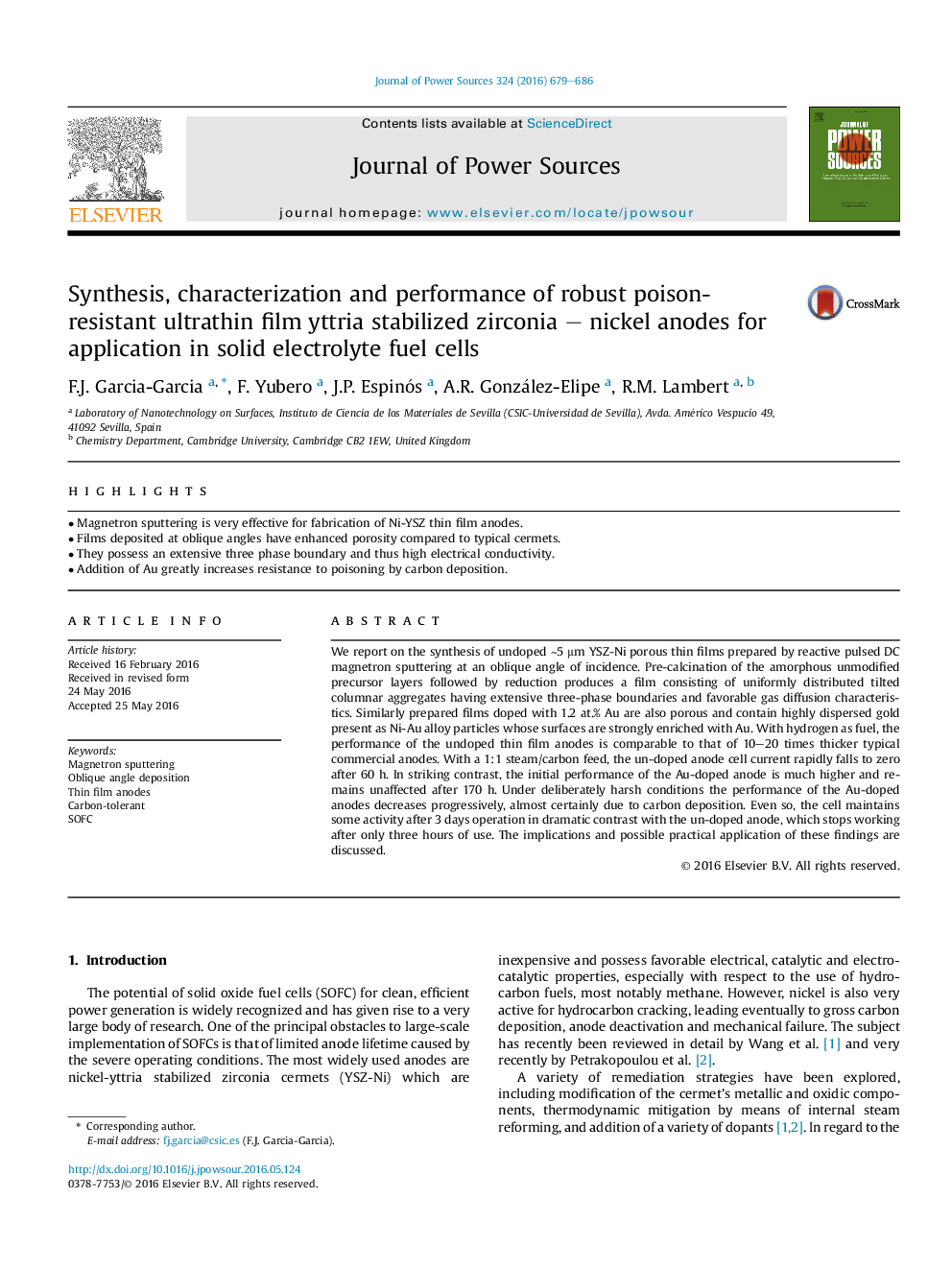| Article ID | Journal | Published Year | Pages | File Type |
|---|---|---|---|---|
| 7727995 | Journal of Power Sources | 2016 | 8 Pages |
Abstract
We report on the synthesis of undoped â¼5 μm YSZ-Ni porous thin films prepared by reactive pulsed DC magnetron sputtering at an oblique angle of incidence. Pre-calcination of the amorphous unmodified precursor layers followed by reduction produces a film consisting of uniformly distributed tilted columnar aggregates having extensive three-phase boundaries and favorable gas diffusion characteristics. Similarly prepared films doped with 1.2 at.% Au are also porous and contain highly dispersed gold present as Ni-Au alloy particles whose surfaces are strongly enriched with Au. With hydrogen as fuel, the performance of the undoped thin film anodes is comparable to that of 10-20 times thicker typical commercial anodes. With a 1:1 steam/carbon feed, the un-doped anode cell current rapidly falls to zero after 60 h. In striking contrast, the initial performance of the Au-doped anode is much higher and remains unaffected after 170 h. Under deliberately harsh conditions the performance of the Au-doped anodes decreases progressively, almost certainly due to carbon deposition. Even so, the cell maintains some activity after 3 days operation in dramatic contrast with the un-doped anode, which stops working after only three hours of use. The implications and possible practical application of these findings are discussed.
Related Topics
Physical Sciences and Engineering
Chemistry
Electrochemistry
Authors
F.J. Garcia-Garcia, F. Yubero, J.P. Espinós, A.R. González-Elipe, R.M. Lambert,
